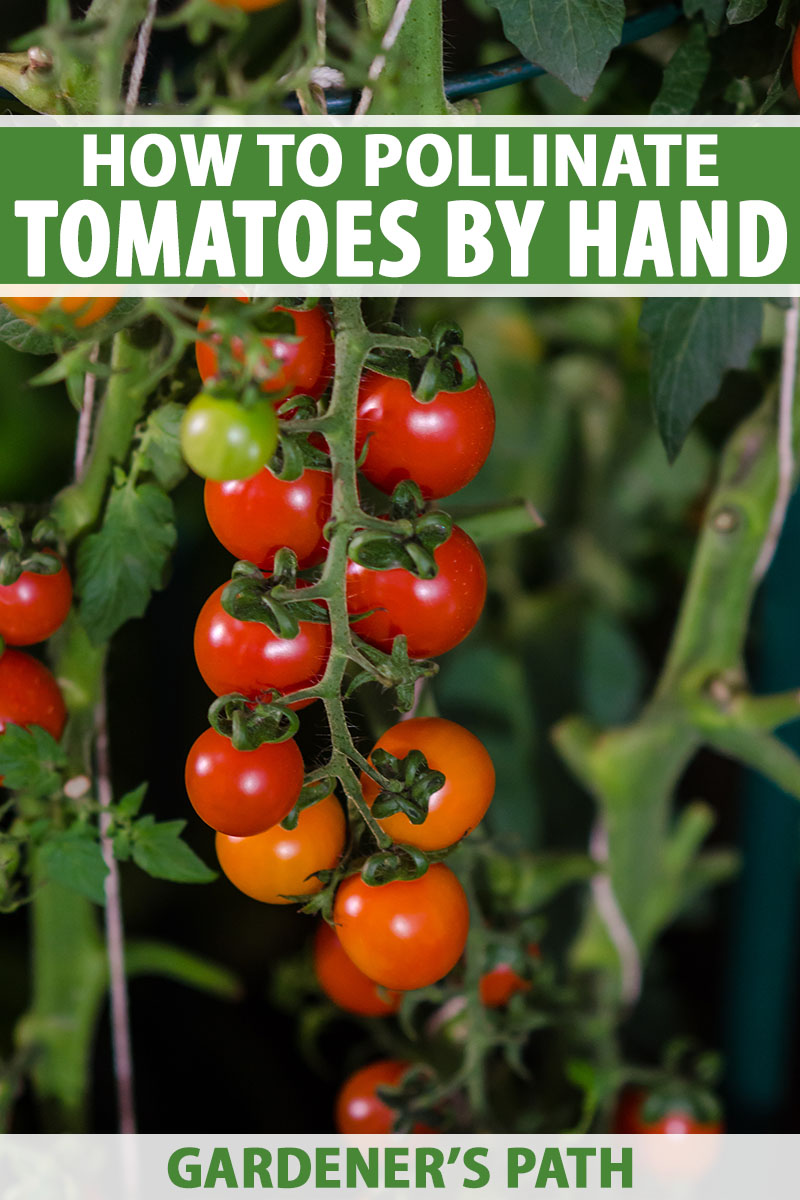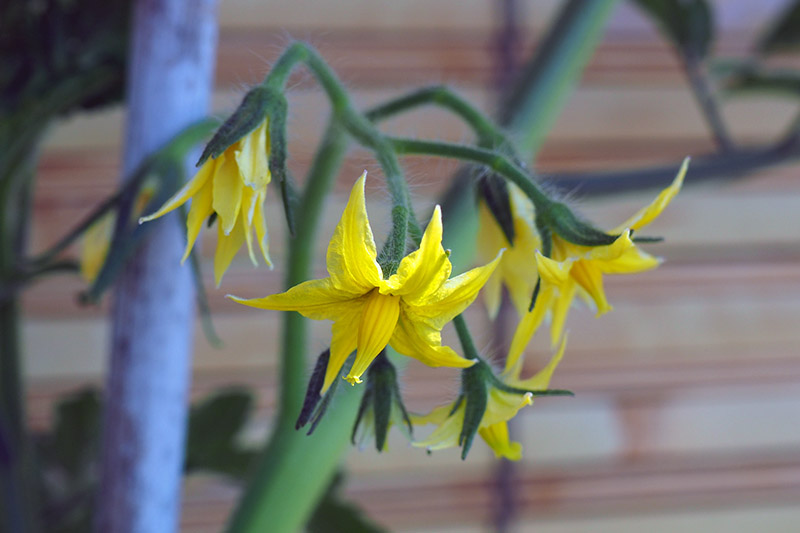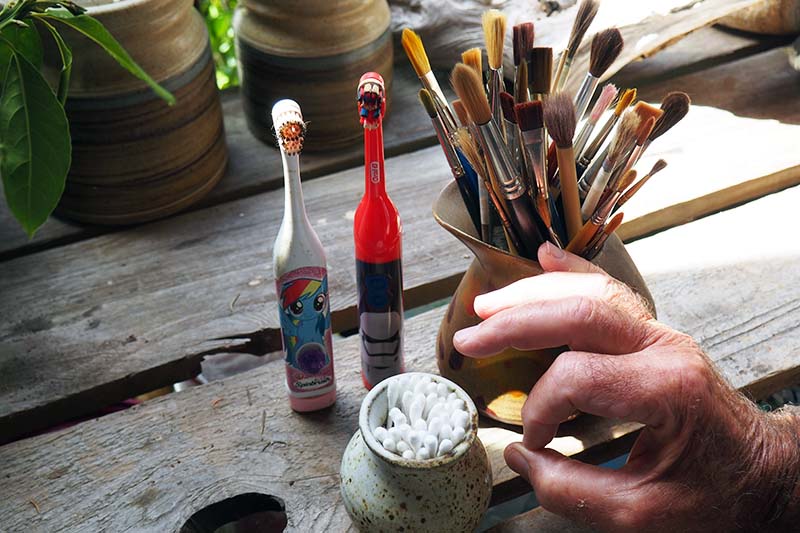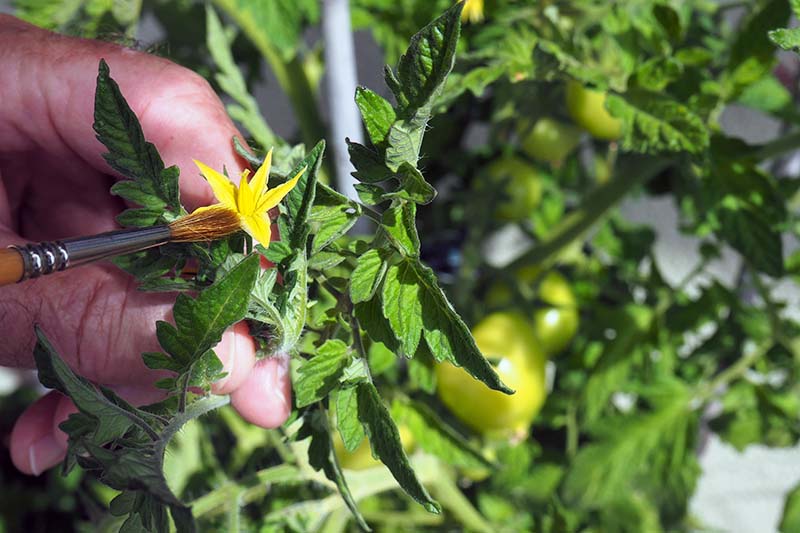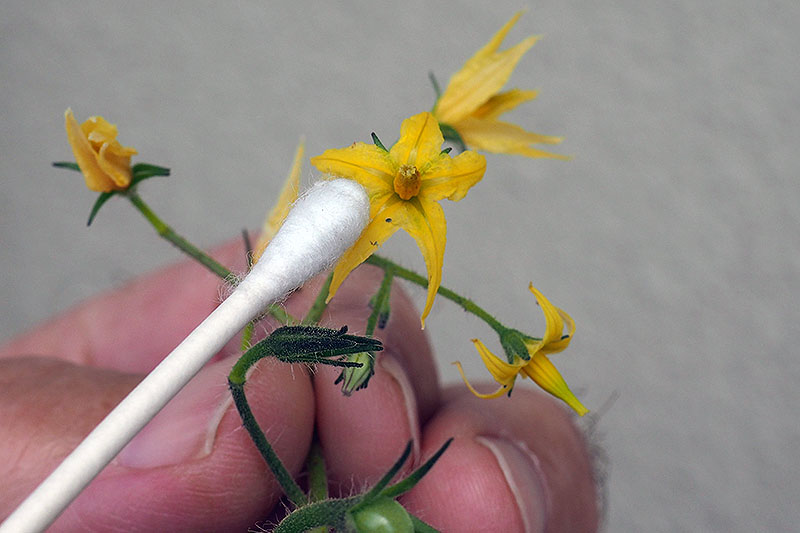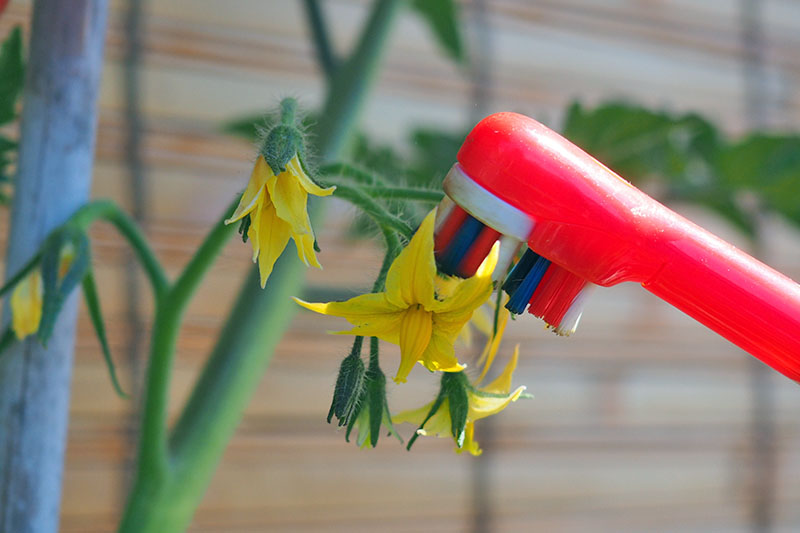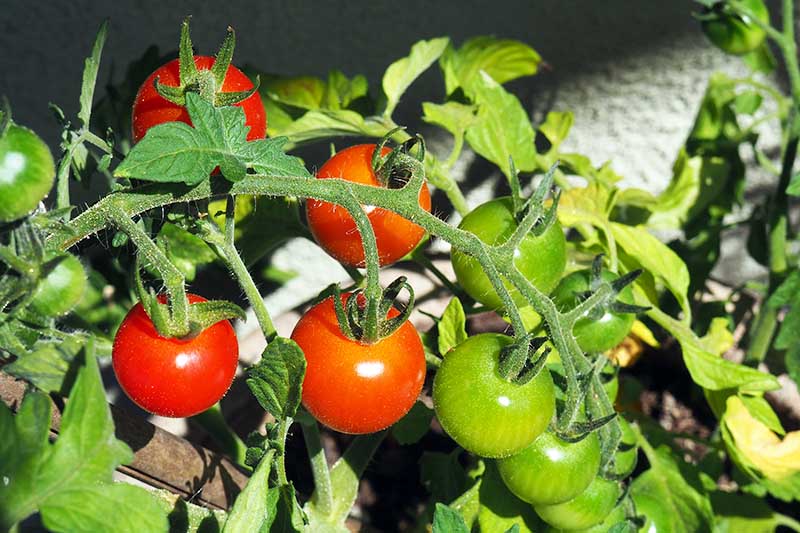But if something goes wrong and the fruit fails to set, it’s a major disappointment! There are a few factors that can cause fruit failure, like cool, damp conditions, high humidity, or a lack of pollinators – a common issue in greenhouses. Luckily, these plants have the “perfect” flower that makes it easy to hand pollinate. We link to vendors to help you find relevant products. If you buy from one of our links, we may earn a commission. Join us now as we look at four easy ways to hand pollinate tomatoes.
Blossom Basics
Tomatoes are self-pollinating plants that have the perfect flowers for the task. That is, each flower contains both the male and female reproductive organs (i.e. the stamen and stigma). This makes pollination easy because each blossom releases pollen from the stamen to land on its own stigma. And once fertilized, fruit develops. Typically, tomato fertilization is achieved through buzz or wind pollination. But numerous studies have determined that buzz pollination is the most effective in terms of fruit size, yield quantities, and increased seed count. Buzz pollination occurs when certain insects, ones with the right vibes such as bumblebees (Bombus spp.) and carpenter bees (Xylocopa spp.), vibrate their bodies to shake pollen from the anthers, or the parts of the stamens that hold the pollen. Honeybees, on the other hand, are not able to do this. Wind pollination occurs when a breeze shakes the blossoms to release pollen. However, in the world of pollen grains, Solanum pollen is sticky and heavy, so it takes a good breeze to release the grains from the anthers. Pollen shed normally occurs from morning to late afternoon, with midday being the ideal time for release and transfer. Sunny, warm weather and low humidity produce optimal conditions for pollination, but doing it by hand means you don’t have to wait for perfect conditions. Some pollen transfer still occurs in less than ideal weather.
How to Pollinate Tomatoes By Hand
To mimic the conditions of either wind or buzzing insects, any one of the following methods will improve fruit set.
1. Shake Them Up
Simply shaking or tapping the plant is enough to imitate a breeze to promote pollen shed. This can be done by gently, but rapidly, tapping the top of each flower. You can also flick the flower stems in short, staccato bursts.
2. Art Brush
A small art brush is an effective tool to gather and distribute pollen in a manner similar to that of nectar-gathering insects. The brush can be inexpensive, but it should have natural bristles – the pollen clings better to natural bristles than it does to plastic ones. Gently lift up the flower and rub or twirl the brush back and forth and around the inside of the petals, along the pistil, and over the tip of the stigma. This will collect and transfer pollen grains. To avoid cross-pollination, always use a different brush for different varieties of tomatoes, or wash your brush in isopropyl alcohol before moving on to another variety.
3. Cotton Swabs
Cotton swabs are another effective tool because their surface of finely spun cotton is ideal for collecting and distributing pollen. Use a swab in the same manner as you would an art brush. You can also collect the pollen in a small dish and use the swab (or a brush) to gently apply it to the tip of each flower’s stigma.
4. Battery Operated Toothbrush
The easiest, fastest, and most effective method is employed via a simple battery-operated toothbrush. There are electric vibrators available for commercial operations, but a child’s toothbrush does the job for the home gardener, at a cost of only a few dollars. The vibrating head mimics buzz pollination and causes the anthers to release their pollen onto the stigma. Just place the vibrating toothbrush head on the flower base or on the flower stem, and buzz for a second or two before moving on to the next blossom.
How Often Should I Hand Pollinate?
If possible, hand pollinate every three or four days in the heat of the midday sun. Target every open blossom and repeat every couple of days until the plants stop flowering to ensure every blossom on the cluster is fertilized.
Ripe, Red Goodness
To enjoy an abundant harvest of delicious ripe, red goodness, hand pollination ensures each blossom has the best chance to set fruit.
Shake like the wind or buzz like a bee, it’s easy to do and takes only minutes to significantly improve your yield – something every gardener yearns for! What’s your favorite way to hand pollinate? Let us know in the comments below. And for more tomato know-how, be sure to read these growing guides next:
How to Grow and Care for Tomatoes in Your Garden When Is the Best Time for Planting Tomatoes? How to Grow Tomatoes in Containers How to Make Tomatoes Turn Red When They Refuse to Ripen on the Vine
Photos by Lorna Kring © Ask the Experts, LLC. ALL RIGHTS RESERVED. See our TOS for more details. Uncredited photos: Shutterstock.

